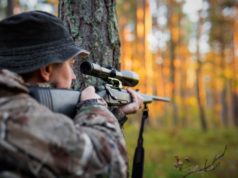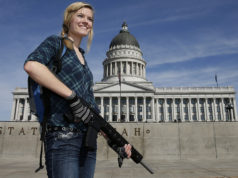Originally published in Reason Magazine
In the wake of any mass shooting, there’s a predictable and justified burst of public outrage and sorrow followed by a series of do-something legislative proposals meant to prevent similar tragedies from ever occurring again.
Depending on the political leanings of the politician or media figure offering the solution, the proposal often rests upon one of these twin assumptions: We must rid the world of the wrong kinds of weapons (i.e., “assault weapons”), or, we must keep guns away from the wrong kinds of people (i.e., “crazy people”).
“How many more copycats are waiting in the wings for their moment of fame from a national media machine that rewards them with wall-to-wall attention and a sense of identity that they crave, while provoking others to try to make their mark?” asked Wayne LaPierre, official lightning rod of the National Rifle Association, in the wake of the Sandy Hook elementary shooting. “A dozen more killers, a hundred more? How can we possibly even guess how many, given our nation’s refusal to create an active national database of the mentally ill?”
Even the nation’s premier gun lobby believes keeping guns away from the mentally ill is a good idea. It’s a sensible-sounding proposal, a logical precaution. But some forensic psychiatrists, whose jobs include the task of identifying potentially violent individuals, say that targeting the mentally ill isn’t as simple as it sounds.
A recent Mayo Clinic study points out that mass shooters tend to meticulously plan their crimes weeks or months in advance, undermining the idea that the mentally ill simply “snap” and go on shooting rampages while also complicating the notion of effective gun control through gun registries, since a methodical planner has plenty of time to obtain weapons through illegal channels.
A more basic problem with a strategy that targets mentally ill people is that the vast majority of them are not violent. When you control for substance abuse, a factor that exacerbates violence in all populations, only about 4.3% of people with a “severe” mental illness are likely to commit any sort of violence, according to a University of Chicago study. The violence rate among those with a “non-severe” mental illness is about equal to that of the “normal” population.
“In the absence of a history of violence or any of the other risk factors, it is impossible to predict who will become violent,” says Stephen K. Hoge, a forensic psychiatrist at Columbia University. “If we put doctors in the position of acting on behalf of the government or acting on behalf of social control, then that undermines the therapeutic mission.”
In other words, by targeting and stigmatizing the mentally ill, especially in the absence of a coherent risk-identification strategy, the effect may be to discourage people who need help from seeking it, while also stripping away the rights of a huge group of people who will likely never commit a violent act.
California is the vanguard of the gun registry movement in the U.S. The Attorney General’s office maintains a database called the “Armed Prohibited Persons System” (APPS), which identifies three groups of people whose guns should be confiscated: Individuals with a documented history of violence, convicted felons/wanted persons, and people with a “severe mental illness,” as defined by the state. Lumping the broad category of “mentally ill people” in with criminals and violent abusers can ensnare innocent and seemingly harmless individuals in an overly expansive dragnet.
Take Lynette Phillips, a suburban California housewife who suffers from anxiety disorder. She encountered the APPS after a trip to Aurora Charter Oak Hospital’s psych ward resulted in her involuntary commitment. Phillips claims she voluntarily checked herself into the hospital after a bad reaction to a new medication and that the involuntary commitment was an error made by an overzealous nurse. Representatives from Aurora Charter Oak declined to comment on the story, but she was released before the full 72-hour hold, and a letter from Phillips’ personal psychiatristconfirms some of the details in her version of events, including the fact that she sought treatment herself.
But the involuntary commitment was enough to put Phillips on the government radar and make her an Armed Prohibited Person. A few days after she returned home, armed officers from the California Department of Justice entered her house in order to confiscate a gun she’d purchased as a gift for her husband. Upon finding more than one firearm in the house, the agents took all of the Phillips’ guns and ammunition. They had no warrant. The CA DOJ would not comment on this story.
“They didn’t need to do that,” says Lynette’s husband, David, who described a scene in which the officers spread all of their guns and ammunition on the front yard as the neighborhood watched. “They embarrassed us in front of the neighbors.”
The Phillips have no criminal record, history of violence, or documented substance abuse problems. But it was only with the help of an attorney that they were able to get their guns back from the state after several months of effort, and only under the condition that David keep the guns in a safe that’s inaccessible to Lynette. They did not return any of the seized ammo.
The Phillips have vowed never to let government agents into their home without a warrant again, and Lynette remains shaken by the experience. Since its inception in 2001, the APPS program has resulted in the seizure of more than 11,000 guns.
“To the extent that society continues to vilify the mentally ill and scapegoat them as the primary cause of gun violence, is a major step backward,” says Hoge.
Watch the Reason TV video above, “The Truth About Mental Illness and Guns,” to hear more about flawed gun control policies and for the full story behind the Phillips’ gun confiscation experience.








This is my first time pay a visit at here and i am truly happy to read everthing at single place.
Google
Usually posts some very exciting stuff like this. If youre new to this site.